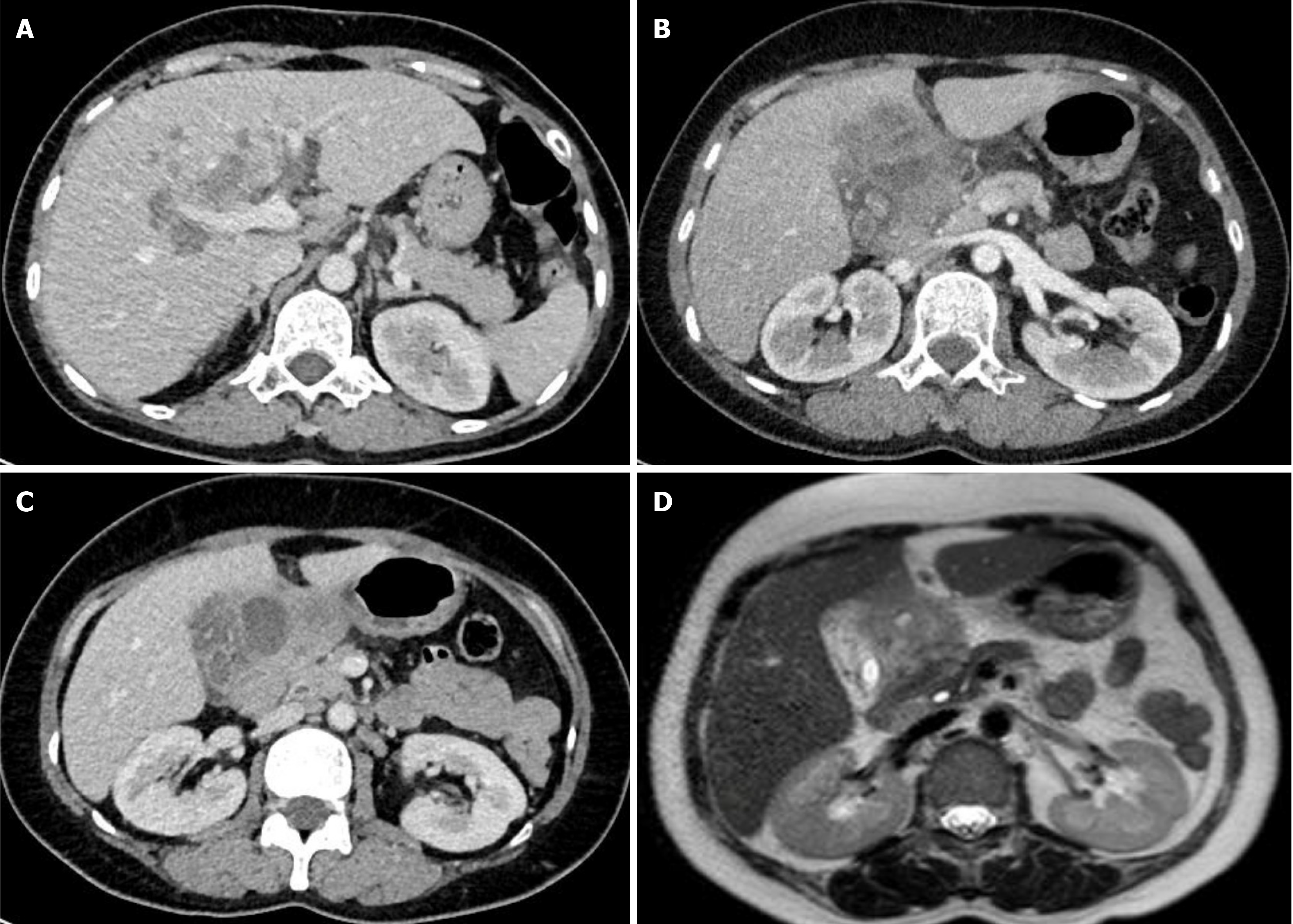Copyright
©The Author(s) 2025.
World J Hepatol. Jan 27, 2025; 17(1): 101664
Published online Jan 27, 2025. doi: 10.4254/wjh.v17.i1.101664
Published online Jan 27, 2025. doi: 10.4254/wjh.v17.i1.101664
Figure 1 Imaging characteristics of the hepatic lesion at the time of admission.
A-C: Contrast-enhanced computed tomography scans in the venous phase demonstrated a lesion in the hepatic hilum, specifically in segment IV, with features suggestive of biliary involvement and invasion of the gallbladder; D: Magnetic resonance imaging also revealed similar characteristics.
- Citation: Le KL, Tran MQ, Pham TN, Duong NNQ, Dinh TT, Le NK. Hepatic eosinophilic pseudotumor due to Fasciola hepatica infection mimicking intrahepatic cholangiocarcinoma: A case report. World J Hepatol 2025; 17(1): 101664
- URL: https://www.wjgnet.com/1948-5182/full/v17/i1/101664.htm
- DOI: https://dx.doi.org/10.4254/wjh.v17.i1.101664









